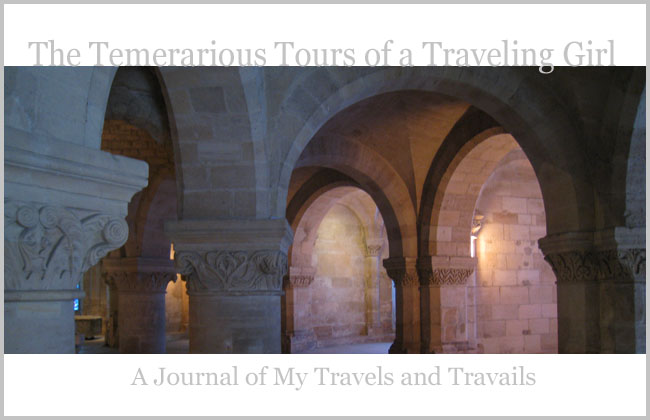
The New Church on our first day in Delft.
The spire of the church is the second tallest in the Netherlands, and the name “New Church” is somewhat of a misnomer because the church was begun in the fourteenth century. 

Nave of the Niewe Kerk.
Unfortunately the morning was rainy, so it wasn’t safe to climb the stairs to the top of the tower, but there was plenty of architecture to admire inside. 

Nave of the Niewe Kerk from the crossing looking towards the west (entrance).
The Church also holds the tomb of the House of Orange, the Dutch royal family, all of whom are buried beneath the church. A monument stands above the crypt in honor of William I of Orange, known as William the Silent, the Pater Patriae of the Netherlands and who led the revolt against Spain which ultimately led to the independence of the United Provinces at the end of the sixteenth century. 

Monument to William the Silent.
After visiting the New Church, we headed across town to the Oude Kerk, the slightly older church in Delft. 

The five spires of the Oude Kerk barely visible over the roofline and through the mist.
Both churches were constructed in the northern Gothic style, which is the type of architecture you usually associate with old European churches. 

South transept of the Oude Kerk.
While the style is pretty regular, differences come through based on geography, so even though the Gothic architecture in the Netherlands is based on that in France and Germany, it has its own variations. The Oude Kerk in particular deviates from the Gothic norm as the side aisles which run adjacent and parallel to the nave are not equal in length. The church also lacks the north transept, so the effect is that it feels asymmetrical. The Oude Kerk is also somewhat less grandiose than the New Church (emphasis on slightly), but it contains a beautiful pulpit and organ. 

Nave of the Oude Kerk looking towards the entrance and organ from the crossing.
In addition, Johannes Vermeer, the great Golden Age painter, is also buried in the Oude Kerk.  Stone commemorating Vermeer - his actual gravestone is elsewhere.
Stone commemorating Vermeer - his actual gravestone is elsewhere.
 Stone commemorating Vermeer - his actual gravestone is elsewhere.
Stone commemorating Vermeer - his actual gravestone is elsewhere.My final stop in Delft was the Prinsenhof, a former monastery that was used by William of Orange during the Eighty Years’ War.

The Prinsenhof with the Oude Kerk adjacent.
William was attacked at the Prinsenhof by a Spanish sympathizer who fired three shots at the stadholder, killing him and leaving bullet holes in the wall. 
Exterior of the Prinsenhof.
The building now houses a museum with some fantastic portraits and paintings relating to the history of the Netherlands. By the time I left the Prinsenhof, it had begun to rain, so I walked back to the hotel through the Markt square to get one last look at the tower of the Niewe Kerk in the rain.

The New Church in the rain.

No comments:
Post a Comment